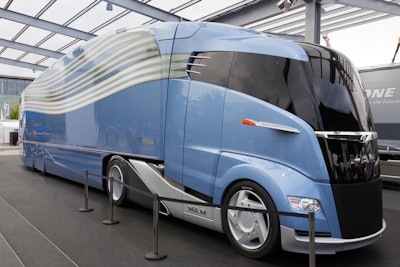
"Garbage in, garbage out” may describe a typical day for a waste hauler, but it means something entirely different to an analyst doing computer-based fuel economy simulations on the effects of a new technology.
When you hear or read technology claims of a 10% improvement in fuel economy, your first reaction may be “wow” or “no way” depending on whether you are a venture capitalist or a technology user.
The reality is likely somewhere in between these two.
Being overly optimistic or overly pessimistic is frankly human nature. We form opinions based on our own experiences and based on the advice of others who we trust (or those we knowingly distrust). While there are truth-in-advertising regulations, they can get a bit murky.
Aerodynamic devices on trailers are an example where claims can be confusing. A manufacturer may claim a device has a 10% improvement in fuel economy. Government entities may validate the device more conservatively at 7%. A fleet manager who you respect has the device installed and says he is only seeing a 3% improvement on the fleet’s annual numbers. Another contrarian fleet manager, one you rarely believe, may say the device doesn’t do anything for fuel economy. Given all that conflicting information, you have to form your own opinion.
It may be that none of these estimates are wrong. Each may be firmly grounded in factual data or analysis. What you are likely missing is that each estimate requires context. In a world of short attention spans – one where in-depth reporting is defined by short headlines, news bites, elevator pitches and social media posts – the critical context very often is not discussed.
So how can these estimates all be right? Over the years I’ve resisted the easy temptation to just outright disbelieve fuel economy claims. Rather, I’ve given them the benefit of the doubt that I’m not being lied to. It’s more of a game for me to figure out the context under which the claims are potentially accurate. Don’t get me wrong, I’ve run into a few outright lies, but generally there is some viable route to explain the claims.
For example, the 10% may be from a test vehicle in optimum weather conditions, alone on a test track hauling an empty 48-foot trailer at a constant highway speed of 55 mph. The 7% may be via a combination of assumption laden CFD analysis and/or scale model tests in wind tunnels with a 53-foot trailer at 65 mph. The 3% may be one specific fleet’s actual experience averaged over a sampling of trucks over a year of use on their specific routes with their specific drivers and their specific loads. The same may be true for the 0% improvement; specific to that one fleet's operations. Technologies for improving fuel economy are rarely universally consistent across the complex real world of trucking.
Reality for your trucks, on your routes, with your loads, your drivers and your operations all may be different. You may even have a spread of performance with one driver or truck doing much better than another.
All those details matter. Eyes tend to gloss over when diving into details of fuel economy claims. Particularly by management types that demand simple answers to complex questions. It doesn’t help that venture capitalists dream big numbers for new technologies and throw money into 10 new concepts knowing full well nine will not pan out. That’s called gambling when you are at the craps table in Las Vegas.
Often, the person making the claim is just passing on information they were given by someone who is considered a subject matter expert, but lacks any of the contextual background needed to understand how the claim of fuel economy improvement is relevant.
Attending the recent American Trucking Associations (ATA) Technology & Maintenance Council (TMC) Spring 2023 session, I listened to repeated statements about the potential fuel savings for autonomous trucks.
The magic 10% claims were discussed. One manufacturer actually did qualify that the benefit considered driver experience as a critical factor. The driver pool ranges from new and inexperienced to experienced, safe million-plus milers. Automated driving is reasonably expected to improve fleet MPG averages but how much will depend greatly on your specific fleet’s size and skills.
The joy of statistics is that results are more accurate if the population is large enough. If your fleet has, for example, 1,000 drivers, your fleet average fuel economy may be low enough that automated technology could give you significant gains by bringing up the bottom performing half of the driver population.
Or not. Your specific routes, environments, traffic conditions, loads, trucks, trailers, drivers and operational practices may see only minor improvement or none at all. This is where that legal qualifier “your experience may differ” comes into play.
Testing and analysis for your specific fleet is critical to understanding the potential for new technologies. There are risks to assuming potential savings based on manufacturer claims, government averages, or opinions expressed by other fleets.
This is a fundamental reason many larger trucking companies nearly always perform their own trials of technologies before making major capital commitments. Small and mid-sized companies have challenges in doing this. If your driver “pool” is one driver, the statistical claims aren’t all that helpful.
The solution for small and medium fleets is asking the OEMs marketing the technologies to answer your questions about how their new technology will impact your specific operation. If they can’t give you a credible answer, go to another OEM. After losing a few customers, OEMs will be more receptive to providing you credible MPG claims based on your specific operations.











